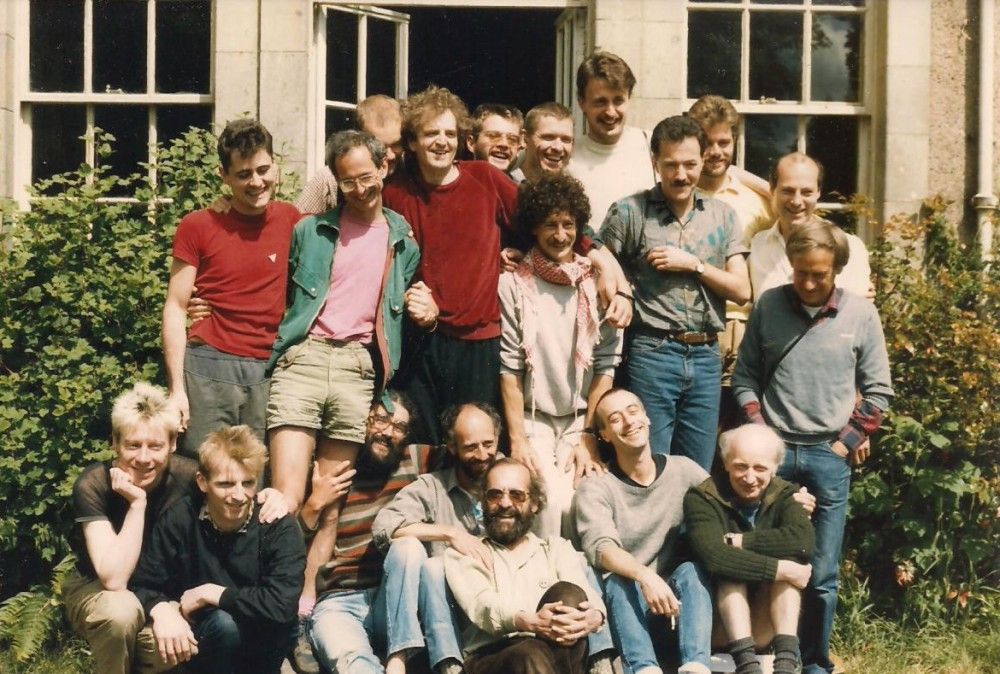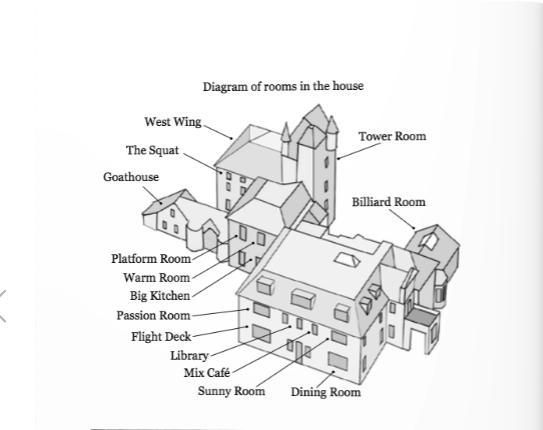Laurieston Hall
![]()
Galloway, Scotland
Housing Co-Op
Educational
1972 - Present

Galloway, Scotland
Housing Co-Op
Educational
1972 - Present
1 Laurieston Hall 2 Cottages 3 Stables 4 Walled Garden 5 Field 6 Back Field 7 Woods
![2022 Laurieston Hall Plan: Drawn from Map of Laurieston Hall from Laurieston Hall: Anatomy of a Commune]() Founded in 1972 as an income-sharing commune, today Laurieston Hall is a housing co-operative. Inspired by the women’s movements and aspiring to a sustainable lifestyle, the group ran a conference center that has hosted hundreds of events, and thousands of people, discussing community politics, education, health care, housing, and work. The community was an early supporter of gay rights and provided a safe space for gay men’s retreats beginning in 1977.
Founded in 1972 as an income-sharing commune, today Laurieston Hall is a housing co-operative. Inspired by the women’s movements and aspiring to a sustainable lifestyle, the group ran a conference center that has hosted hundreds of events, and thousands of people, discussing community politics, education, health care, housing, and work. The community was an early supporter of gay rights and provided a safe space for gay men’s retreats beginning in 1977.
Named for the massive Victorian house at the center of the community, the 47 room Laurieston Hall (1) was built in 1892 by Arthur George Sydney Mitchell. The sprawling building contains dozens of rooms including The Squat, the Billiard Room, the main dining room, and the library. The living spaces, including the cottages (2) are heated by wood fires and hydro supplies the majority of the electricity.
The community keeps cows, pigs, hens, and bees, and grow organic fruit and vegetables in the walled garden (3). The hall i surrounded by 180 acres of woods, pastures, and wetlands. The housing co-operative pay the majority of their rent through workshare, two and a half days a week of work in exchange for room and board.

Named for the massive Victorian house at the center of the community, the 47 room Laurieston Hall (1) was built in 1892 by Arthur George Sydney Mitchell. The sprawling building contains dozens of rooms including The Squat, the Billiard Room, the main dining room, and the library. The living spaces, including the cottages (2) are heated by wood fires and hydro supplies the majority of the electricity.
The community keeps cows, pigs, hens, and bees, and grow organic fruit and vegetables in the walled garden (3). The hall i surrounded by 180 acres of woods, pastures, and wetlands. The housing co-operative pay the majority of their rent through workshare, two and a half days a week of work in exchange for room and board.


Nam semper semper ex
In porttitor pellentesque sapien